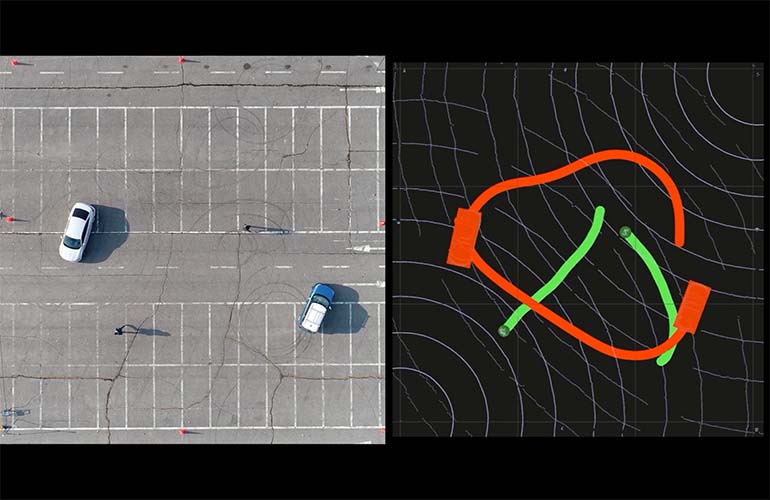|
Listen to this article  |

Instead of placing sensors and computers directly on board vehicles, hardware is placed on the surrounding environment such as buildings, poles and other stationary infrastructure. | Image credit: Seoul Robotics
Korea-based Seoul Robotics introduced its Level 5 Control Tower (LV5 CTRL TWR), a mesh network of sensors and computers on infrastructure that guides vehicles autonomously without requiring sensors on individual vehicles. The solution leverages 5G to solve first- and last-mile autonomy, by automating thousands of vehicles with only a few sensors.
Instead of placing sensors and computers directly on board vehicles, hardware is placed on the surrounding environment such as buildings, poles and other stationary infrastructure.
Seoul Robotics is currently working with BMW to automate last-mile fleet logistics at its manufacturing facility in Munich. Seoul Robotics also sees a wide range of business applications ranging from vehicle distribution centers to car rental companies and trucking logistics.
As the industry strives to move forward towards Level 5 autonomy, there are still several hurdles to overcome, including safety, costs, and the ability to both perceive and anticipate obstacles effectively. To mitigate these challenges, Seoul Robotics is taking a new approach to achieve autonomy through infrastructure.
By placing sensors equipped with 3D perception software around vehicles – for example, on traffic lights, buildings, and highway overhangs – the system can fully capture the environment and communicate with other sensors and the 4/5G systems that come standard on vehicles today. LV5 CTRL TWR is the brains of this mechanism, collecting all the 3D data and then automating vehicles accordingly using V2X communications.
“Level 5 mobility has been proven to be more challenging to achieve than expected – until now. LV5 CTRL TWR has massive potential to fuel autonomous mobility, and we are thrilled to continue expanding upon the implementation of this technology with BMW and other partners,” said HanBin Lee, CEO of Seoul Robotics. “Ultimately, these systems will be deployed in additional public and commercial settings, powering aspects of our everyday lives, such as autonomously navigated parking and public transit. With LV5 CTRL TWR, this future is closer and more accessible than ever.”
While autonomous mobility is exciting for the everyday consumer, LV5 CTRL TWR is already proving to have a tremendous impact on business operations. The collaboration with BMW, which is the largest-ever implementation of this type of technology, leverages hundreds of connected LiDAR and 3D sensors on infrastructure to automate newly manufactured vehicles within factories and vehicle distribution centers without any human involvement. By making this process autonomous, Original Equipment Manufacturers (OEMs) like BMW can increase operational efficiencies and safety within automotive logistics.
LV5 CTRL TWR is able to automate vehicles from multiple vantage points, such as behind a truck and around corners, as well as predict trajectories, thus eliminating blind spots, a current challenge for on-vehicle LiDAR systems. This broad understanding of the environment and surrounding activity reduces collisions and creates a more reliable process. Furthermore, this system is sophisticated enough to handle the movement of hundreds of vehicles simultaneously without any added cost, ensuring vehicles can drive slower or take longer, safer routes which can further prevent accidents.
LV5 CTRL TWR is made possible because of SENSR, Seoul Robotics’ 3D perception software. The system is highly flexible and can mix and match different makes and models of 3D sensors to ensure that LV5 CTRL TWR has the most accurate environmental understanding.
Seoul Robotics will be showcasing LV5 CTRL TWR and its full suite of 3D perception-based solutions in booth #6559 at the Consumer Electronics Show (CES) on January 5-7, 2022.
Credit: Source link


Comments are closed.